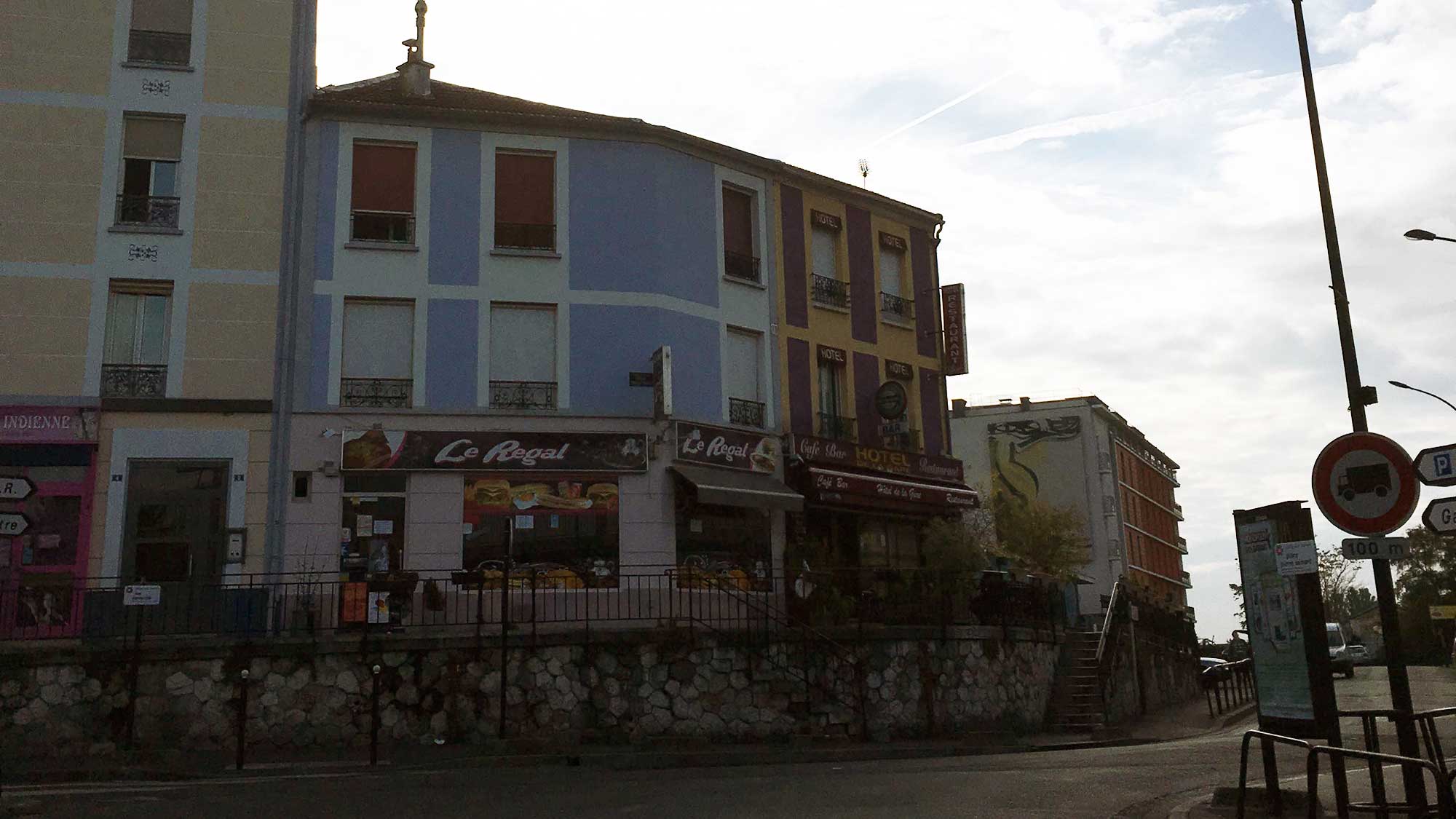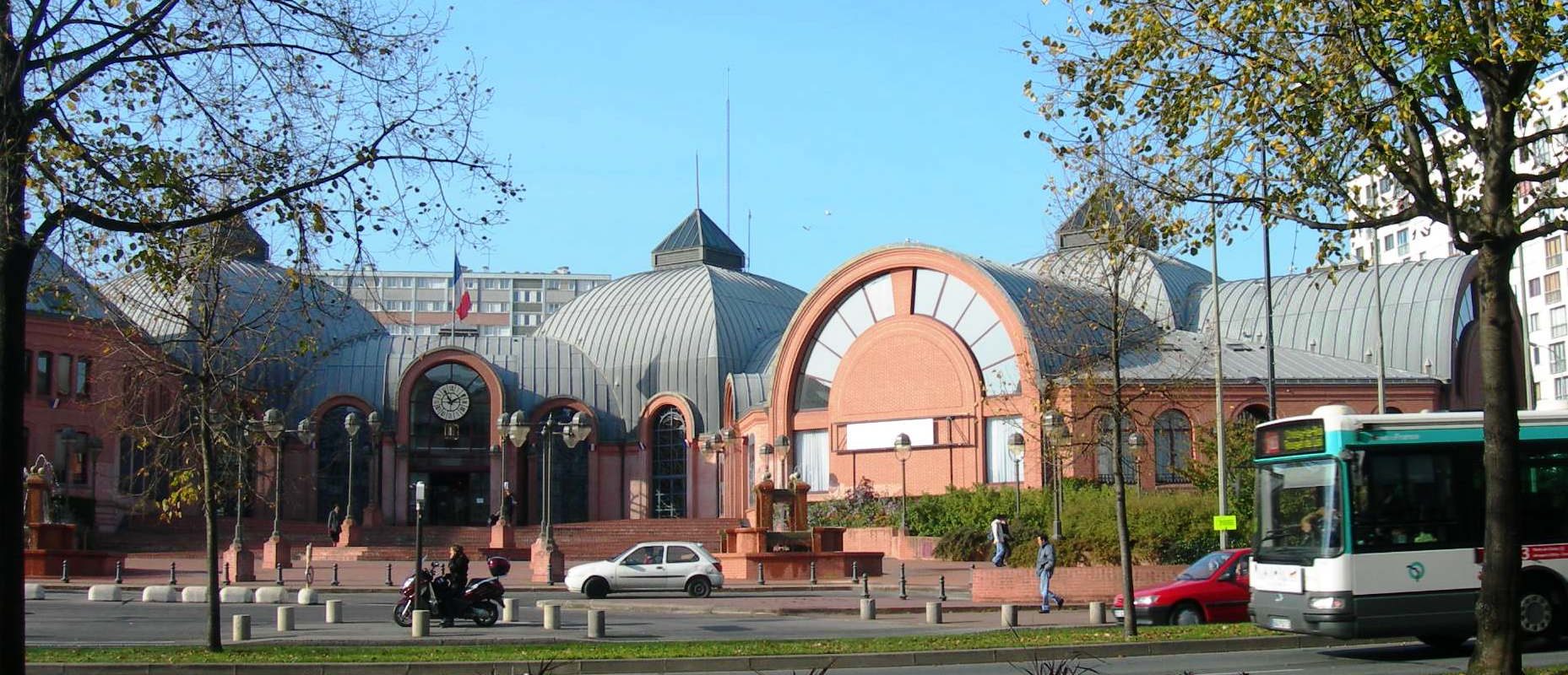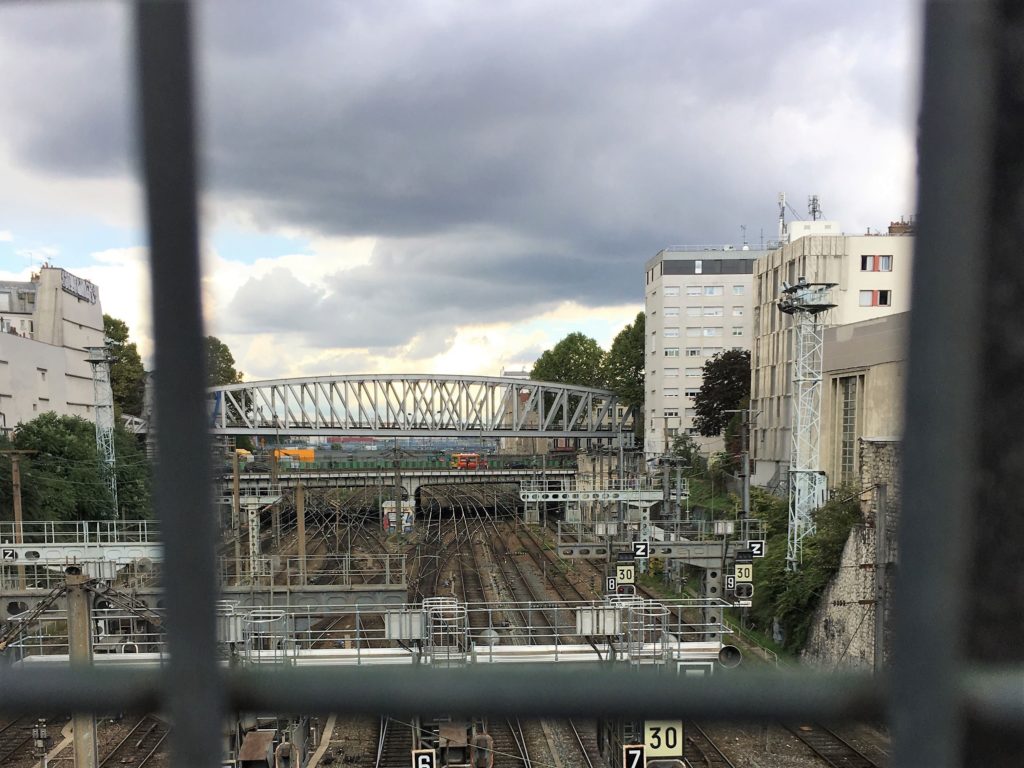PARIS, France — My first month here has been a been an attempted balance between navigating the labyrinth of French bureaucracy and setting the stage for my research on laïcité, or French secularism, in public schools.
On the former, consider this: Want an apartment? Need a bank account. Want a bank account? Need utility bills in your name. Want utility bills in your name? Need an apartment. Even once you find a place to live—want to finally put those utility bills in your name? Need a bank account.
This isn’t my first foray into the maddeningly or hilariously cyclical constraints of getting settled into Paris. I first lived here as a junior in college, then as a Master’s student. With each return, I consider myself all the more seasoned a veteran and slightly more of an adult, ready to tackle the impossible. That optimism quickly fades as administrative hurdles accumulate.
My fear is that by the time I’ve put all my papers in order, I’ll look up and realize it’s September 2019, time to return to the United States.
But let’s get to my research. I’m here to address French secularism and social cohesion by exploring the way the government has promoted laïcité in the public school system in the wake of terrorist attacks in 2015 and 2016. The events prompted the declaration of a state of emergency lifted only this October—however, certain elements are likely to become common law, to the dismay of human rights advocates.
When I explained my project to the consular officer at my visa appointment, he immediately dropped his neutral-consular-officer expression. “Why!?” he exclaimed. “Why would you put yourself through that?”
The question of laïcité in public schools—and French society more broadly—is a decisively hot topic. It has increasingly been the focus of international, and especially American, commentary on the social tensions that the recent attacks, often committed by French nationals with immigrant backgrounds, have brought to the fore: In January 2015, gunmen struck the offices of the satirical weekly Charlie Hebdo and a kosher supermarket, killing 17 people. That November, attacks at three sites in and around Paris killed 130. And the following July, on Bastille Day, a truck rammed through a crowded promenade in Nice, killing 86. Smaller attacks around the country have punctuated the months since, and numerous plots have been thwarted, according to the French authorities. Although more recent attacks have shaped the current conversation, it’s worth noting that in Toulouse in March 2012, three men with dual French and Algerian citizenship committed a series of coordinated attacks that left seven dead.
Although the tragic events gave a new edge to the conversation about laïcité, the debate is hardly new. The concept dates to the 1905 law that established state secularism here—an anti-clerical reaction to the hegemony of the Catholic Church that made schools a central battleground. At the time, laïcité was seen as a guarantor of equality regardless of origin or conviction, reinforcing the primacy of French citizenship. But while the 1905 law serves as the backbone of laïcité as a social phenomenon, some argue that subsequent legislation—notably a March 2004 law banning “ostensible” religious symbols in public elementary, middle and high schools—has set the tone for its force in contemporary France.
The 2004 law didn’t come from nowhere. In 1989 in Creil, a small town about an hour north of Paris, a middle school expelled three girls for refusing to remove their headscarves, unleashing a heated debate among politicians, intellectuals and the media. In a statement two months later, a government committee argued that as long as religious signs or garb don’t constitute “pressure, provocation or proselytism” or disturb the classroom, they could not be banned in schools. The decision to allow or disallow a headscarf in the classroom was thus left to the teacher.
But 16 years later, “ostensible” religious signs were banned altogether in public schools; and 13 years after that, the issue has only become more acrimonious, with some contending that the 2004 law’s vague language has been too easily twisted to discriminate against Muslims. In a striking example from 2015, a 15-year-old Muslim girl—who took off her headscarf before entering the school on a daily basis—was removed from class twice for wearing a long black skirt, which her teacher deemed an ostensible religious sign. (The girl said it was just a black skirt and nothing more. Many on Twitter erupted in solidarity, eagerly pointing out that “maxi” skirts were in fashion).
Critics of the 2004 law seized on the incident—which took place on the heels of the Charlie Hebdo attack—as an example of how easily the legislation could be used to discriminate against Muslims. Just after the attacks, a number of Muslim students refused to participate in a national moment of silence to honor the victims—a highly mediatized event that prompted the Education Ministry to launch a series of measures to promote “Republican values” and laïcité in public schools as an incubator of French citizenry. If young Muslims weren’t embracing Charlie, the logic went, schools were failing to train citizens; some other element of their identity was taking precedent.
The risk of my delving deeper into the “how we got here” in this newsletter is that you’ll stop reading before I get to the here-and-now. My goal for the two years of my fellowship is to get closer to the ground—to break through the often over-simplified accounts in the American media, or the inevitably ideological debates that typically appear on French TV and radio. I’ve spent my first month assessing the spectrum of views on laïcité’s role in public schools and contemporary France, learning more about its multiple evolutions—since 1905, since 1989, since 2004 and since 2015.

I met Christiane Vollaire, who teaches philosophy at a high school in Vitry-sur-Seine, a working-class suburb south of Paris, for coffee near the Sorbonne University. It’s hard to gauge her age, between her white hair on the one hand, and funky earrings and definite coolness on the other. The majority of her students are second-generation immigrants, many of them Muslim, practicing and non-practicing. When I asked about how, if at all, the discourse around laïcité—or just the atmosphere more broadly—had changed since Charlie Hebdo, she referred to a “moral panic”—a phrase I’ve often heard since my arrival. “Je ne suis pas Charlie”—I am not Charlie—she said, negating the international refrain of solidarity that followed the attacks. She doesn’t like the publication because she thinks it toes the line of what’s reasonable, recalling Nazi propaganda. She didn’t require her students to participate in the moment of silence; and if they wanted to, she encouraged them to think of victims of all forms of discrimination.
She says her school isn’t an easy place in which to teach. “I’m one of the few who hasn’t resigned myself to the difficulty,” she said, listing insufficient funding, absent teachers, behavioral problems among students and the host of other challenges that can face public schools in poor areas. It’s interesting, then, that in the government’s eyes, students in schools like hers—who live in socioeconomically struggling areas and are more likely named Karim or Fatima than Pierre or Marianne—need a refresher on secular, Republican values, prioritizing the public school system as an incubator of citizenship rather than a social ladder or guarantor of economic opportunities. (Some would argue that those go hand in hand.)
Vollaire and others inside the school system take issue with the belief that schools can exist in isolation from the everyday inequalities their students face. An Education Ministry official I spoke with—who served in both Francois Hollande’s administration and the current government—said, “We can’t pretend to want to transmit laïque values to students in the name of freedom, equality and fraternity”—liberté, egalité, fraternité, the values of the French Republic—“when schools show the inverse every day,” he said. “There is no equal education in France.”
“We have a model where ethnicity supposedly doesn’t exist, that we’re all citizens,” he added. Indeed, the French census doesn’t measure race or religion. “But for many students living in tough areas, that’s a lie.” I asked why, then, following the Charlie Hebdo attacks, Hollande’s administration chose to focus on values, not concrete measures to promote equality in education. “Because that was the command of the government,” he said.
Martine Janner, a former instructor at a teachers’ academy in Rouen and now a professor at Paris 13 Villetaneuse, a university north of Paris, also lamented that pressing social issues aren’t being addressed in the school system. “We’re talking about the need to transmit values in schools,” she told me, “but we need to think about a school’s other obligation: to be a social ladder. In that, it’s failing.” I met her with her former colleague from the teacher’s academy in Rouen, Jean-Louis Roussel, where he is also a “référent laïcité”—a post created in 2014 with the mission to “train and help pedagogic and educational groups who are confronted, on the ground, with concerns around laïcité;” each public institution, from hospitals to prisons, has its own référent.
In that context, Janner added, laïcité has become a sort of catchall—a term that has come to subsume other conversations about young residents of the banlieues, or suburbs, who “don’t find their place.” Is that because recent manifestations of laïcité, like the 2004 law, have helped cement other inequalities around ethnicity and religion?
Perhaps. I mentioned a vocal minority in the debate that wants the 2004 law overturned. “The 2004 law responded to a situation that had become impossible” following the Creil affair, Roussel said. Nothing was streamlined. If that law has been abused—long skirts, for example—that’s because it’s not being used as a tool for dialogue.
But he acknowledged some fuzzy situations. The 2004 law doesn’t apply at the university level. But where he works, female students who wear the veil, for example, are training to work in the public sector, where they’re required to remove it. Should they be encouraged to do that in the course, too, given what will immediately follow? Not according to the law. But some instructors still feel compelled to communicate that to veiled students, potentially creating uneasy situations. “A student told me that she wears the hijab as protection,” he said. “Okay. But is she in danger in my class?”
Both he and Janner emphasized that teachers need to seize on government initiatives around laïcité to create debate. For example, according to the 2015 measures, students and parents must sign the so-called laïcité charter, a document introduced in 2013. Critics argue that the requirement, along with other measures, paradoxically turns laïcité into a “civil religion.” But that’s only true if it’s “applied without reflection,” Janner said. Both she and Roussel were taken aback by the idea that teachers would enforce it so mechanically, as dogma rather than debate.
My meeting with Janner and Roussel lasted over two hours. Although they believe in the importance of laïcité in public education, they also acknowledge that teachers don’t have enough time to reflect on how it should be executed. “Not even two hours in an entire training course,” Roussel said.
It seems to a certain extent that major actors in education policy, laïcité and the intersection of those worlds don’t know exactly where to go from here. There’s a sense among some that the idea has departed from its original conception—that, in a France in which terrorism has generated a climate where Islam is feared and the far-right National Front Party can earn more than 10 million votes for the first time in its history, laïcité has become a politicized value with discriminatory potential. Many, then, see the task as a sort of re-education: bringing laïcité back to its source and legal definition rather than letting it piggyback on other, more worrying social phenomena—notably Islamophobia.
That more measured view is just that, however: one measured view. And on an issue as heated as this, the spectrum is large. When I met Caroline Fourest, a writer and professor at Sciences Po, an elite university in Paris, she told me the contemporary need to promote laïcité against religion is the same as it was in 1905. But rather than fighting the Church, France’s Republicans face a rising Islam in which the veil has become a statement of political defiance.
Fourest supports the 2004 law, saying its scope should expand to universities; she has butted heads with Muslim women’s organizations whose vision of feminism clashes with her own. It’s little surprise, then, that her latest book, Génie de la Laïcité identifies individuals and organizations I’d planned to interview by name, picking them apart and criticizing their missions. That includes the Observatoire de la laïcité, a government body with the mission of “respecting the principal of laïcité in France.” I met with Nicolas Cadene, the general rapporteur, who stressed the need to reiterate laïcité as a way of guaranteeing religious freedoms while creating a united citizenry—not as a way to stoke hatred or exclude religious minorities. At its core, he reminded me, laïcité is about empowering the minority against the majority, not the other way around.
But just because Fourest, coming from the left, disagrees with the government line on laïcité and has clashed with a host of organizations, from anti-discrimination groups to those that focus on inter-religious dialogue, doesn’t mean she’s fringe. It is interesting that the virulent laïque left wing increasingly converges with elements of the right. Consider an op-ed that appeared in Le Figaro, a major right-leaning national newspaper, following a recent knife attack at a train station in Marseille. It outlines Islam’s dangerous creep on French civilization, decrying a human rights discourse that compromises national security and upends French identity in the name of multiculturalism—concerns that have propelled far-right parties and stoked anti-immigrant sentiment across Europe.
Extracting bits and pieces from in-depth interviews and conversations with teachers, politicians and academics on an issue that has become dangerously divisive is a sensitive task. A compelling number of people I’ve spoken with fear that laïcité has strayed too far from its roots in the current political climate and must be urgently restored. But they see themselves as a minority fighting the moral panic unleashed by the 2015 attacks—a sense that the nation is in crisis over both its security and identity. It is in that context that the National Front has been able to manipulate laïcité, typically championed by the left, to bolster its xenophobic, anti-immigrant—and anti-Muslim—platform.
A host of actors, including from within the French government, are trying to fight the trend in earnest. But laïcité’s troubling evolution isn’t taking place in a vacuum, and neither are the tensions straining the French social fabric. France’s colonial legacy, with which it has yet to come to terms, colors its relationship with many of its immigrants. When, on the campaign trail in February, then-candidate Emmanuel Macron called France’s history with Algeria a “crime against humanity”—a reference to the 132 years of French rule that ended in a bloody war of independence—he was forced to backpedal, cornered by his opponents across the political spectrum. With laïcité increasingly wrapped up in discrimination against immigrants from those former colonies, progress may hinge on a larger reckoning with the past.
That makes optimism seem distant. But it’s been only one month! Stay tuned.


